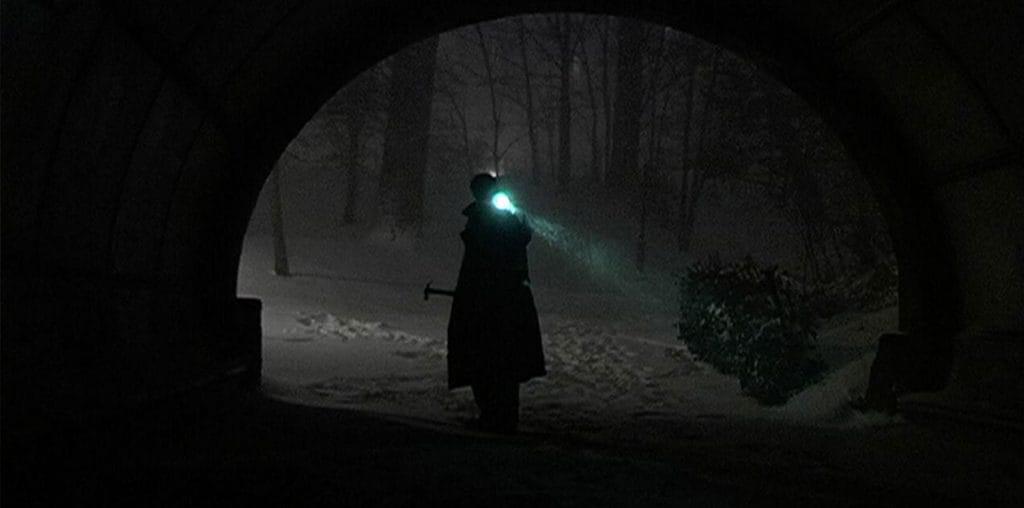
How eerie and satisfying is it to see Pedro Almodóvar take on science. Lab equipment moves swiftly in “The Skin I Live In,” with the help of jump cuts to show continual action. Worthy of taking on any subject, but never one to take it at face value, the filmmaker offers his spin on the mad scientist film. Many have described the tradition to reflect the populace’s distrust in science, which furthers technology while humanity can barely keep up. Yet, Almodóvar recalls the overachiever prevalent in the Universal horrors, the gothic tradition before them, and stretching back to the myth of Faustus, who wanted all knowledge and was willing to sacrifice everything for it. Playing the role is Antonio Banderas, seemingly an odd choice though he’s just Colin Clive and Jeffrey Combs, un-geeked.
Robert (Banderas) experiments with the eponymous organ – a fitting choice for Almodóvar, since so much of our identity lives in the skin. Though Robert’s respected in the legit world of science, the filmmaker gives him horror movie lighting (a key light from beneath), during a lecture. At home, he works on a female subject (called Vera Cruz), restrained under his control. Occupying a near-barren room, she wears a skin suit that makes her look bland, and yet sensual. When not in her room or the operating area, Robert zooms in a surveillance camera on her, thus making her an object of obsession-cum-lab rat. Robert’s training allows him to mold his desire. He mutates invulnerable skin to apply to his altered human, thus creating his ideal. Though the means are different, the end is usual for Almodóvar – it’s all for love.
Skin grafting onscreen goes back to Whale’s “Frankenstein” and “The Hands of Orlac” before it (along with the American remake, “Mad Love”). Yet, Almodóvar’s film (which he adapted from Thierry Jonquet’s novel) recalls Georges Franju’s “Eyes Without a Face,” a film that, along with “Psycho” and “Peeping Tom,” launched modern horror. After the Almodóvarian twists finish, “Skin” proves to be a tribute to Franju. “Eyes” is about an attempt to restore humanity through surgery, even as the latter wears away the former. In “Skin,” the grafting is an attempt to restore love, heal pain of the past, and – not unusual for the filmmaker – question gender and identity.
Robert appears to have created an idyll for himself, where he lives comfortably and experiments, with his mother there to tend house. It’s disrupted with arrival of Zeca (Roberto Álamo), whom we learn is Robert’s illegitimate brother. Almodóvar infuses Carnivalesque flair (a remnant of his earlier work) as Zeca is dressed as a tiger for the said celebration. He’s also the most outright villain the writer-director has offered in some time. With Robert away and his mother wary about her son visiting, Zeca fixes eyes on Vera, in a case of mistaken identity that reflects the scientist’s repressed desires. Zeca is gone just after he arrives. Yet, Almodóvar uses him to enter the past, fervent territory for the director.
Robert is a melodramatic case history that becomes so poignant, it belies its own style. Unlikely parties enter the tale and, as usual for this director, become essential to the narrative fabric. Sporting Almodóvar’s usual narrative mastery, “Skin” satisfies even next to his masterpieces “All About My Mother” and “Talk to Her.” In the latter films he uses sensationalism to arrive at meditations on passion and humanity’s search for it. Yet, his films that approach the territory are always a delight.

